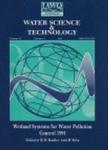版权所有:内蒙古大学图书馆 技术提供:维普资讯• 智图
内蒙古自治区呼和浩特市赛罕区大学西街235号 邮编: 010021

作者机构:Department of Civil Engineering Faculty of Engineering University of Birjand Birjand Iran Department of Water Engineering Faculty of Agriculture University of Birjand Birjand Iran
出 版 物:《Water Supply》 (Water Supply)
年 卷 期:2025年第25卷第1期
页 面:20-33页
核心收录:
学科分类:08[工学] 083305[工学-城乡生态环境与基础设施规划] 0815[工学-水利工程] 081403[工学-市政工程] 0835[工学-软件工程] 0814[工学-土木工程] 0833[工学-城乡规划学] 0812[工学-计算机科学与技术(可授工学、理学学位)]
主 题:Adversarial machine learning
摘 要:Accurate prediction of streamflows is crucial for managing water resources. Machine learning approaches have gained popularity for their ability to handle noisy and non-linear data and develop models that are capable of detecting relationships from the data they are provided with. This study was conducted to compare the performance of three machine learning algorithms (including extreme learning machine (ELM), random forest (RF), and gene expression programming (GEP)) and their hybrid versions in predicting the monthly streamflow of the Leaf River catchment. The models were tested with three scenarios and the most accurate scenario has been selected for the implementation of hybrid models. Results of all the models have been examined with a new evaluation index called general index (GI), which is calculated based on the three error statistical indices. Finally, the GEP model outperformed the other models, all the scenarios with GI ¼ 11.268 in the M3 scenario and later, the ELM algorithm presented the best performance with GI ¼ 12.811 in the M2 scenario, while the RF model had the worst overall performance. Regarding the hybrid models, using the EMD and principal components analysis (PCA) methods decreased the precisions of the models with the GI values fluctuating around 35. © 2025 The Authors.